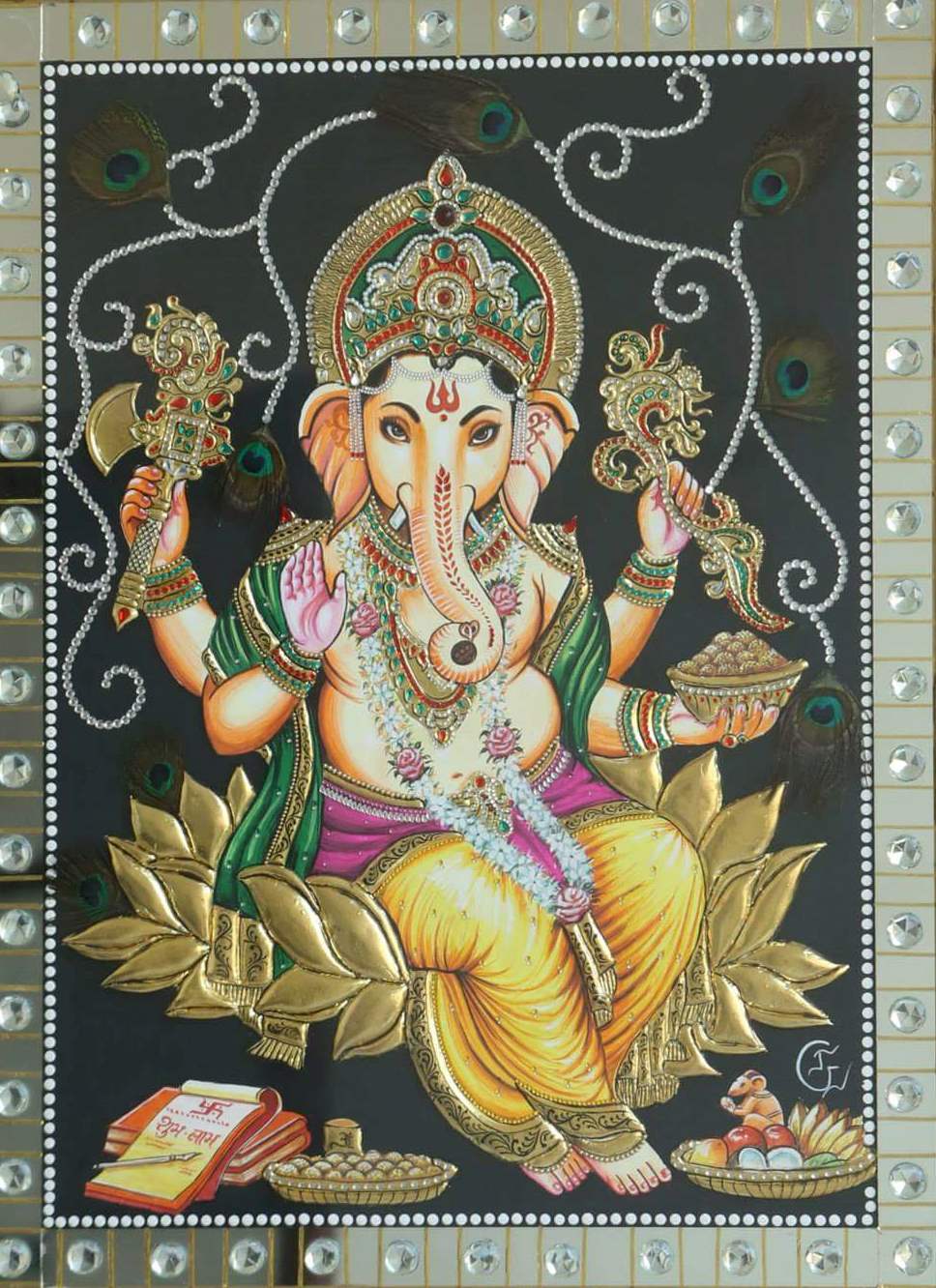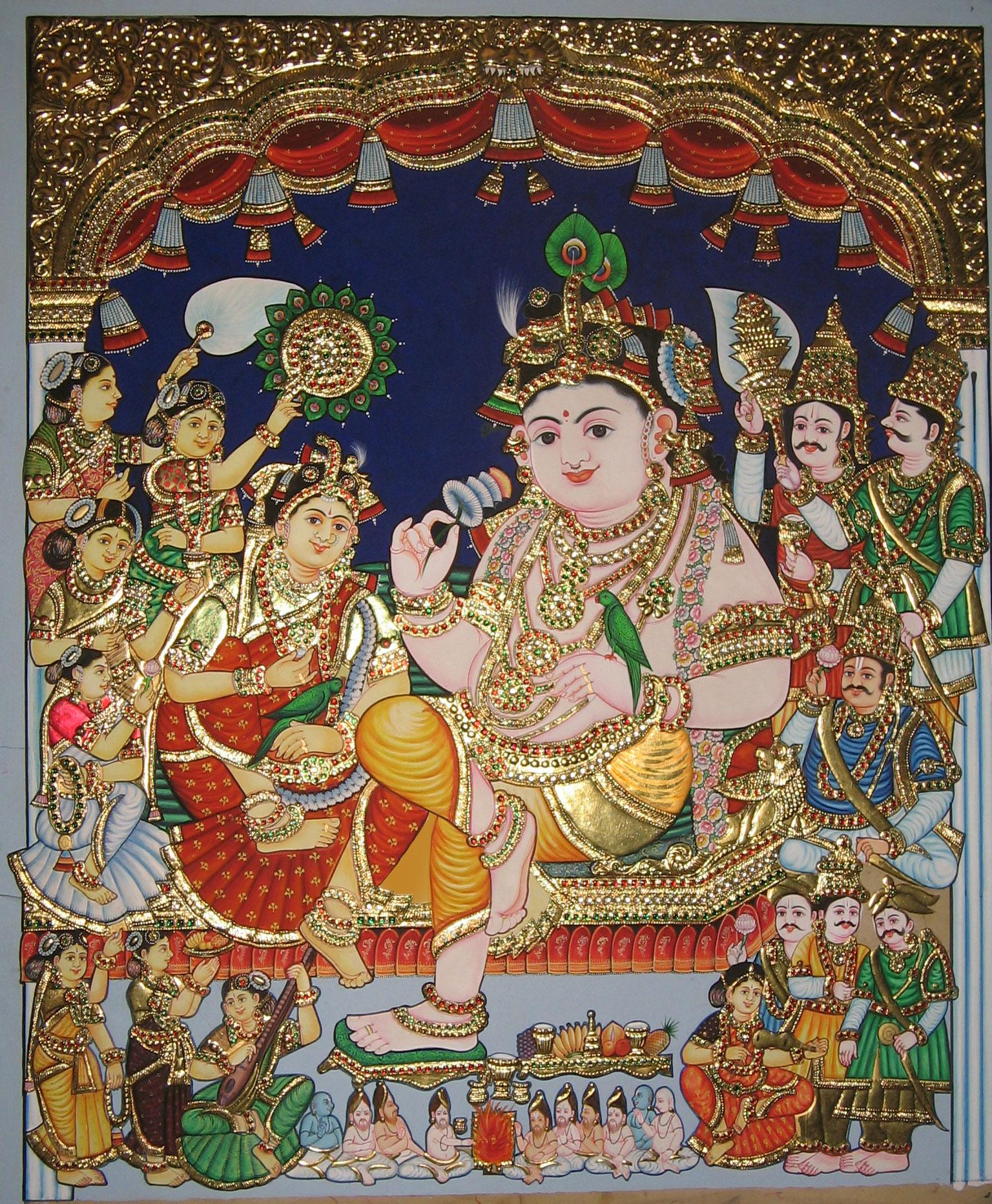
Art is known for presenting the beauty of everything in its best and pristine form. It is used as a medium to express the magnificence of nature, objects, deities and what not. In fact, if there is one form of Indian traditional paintings that portray the beauty of the almighty fervently then it is Thanjavur or Tanjore paintings. No other traditional art form has till now been able to represent the lords in a way better than Tanjore does. Each and every painting made using this style is beyond doubt the celebration of the beauty of the divine with the effervescent colors and gold foiling.
No wonder why these paintings are so high in demand even now and are also considered as a great souvenir option. That is why this time we thought of widening the horizons of your knowledge pertaining to Tanjore Paintings. So, let’s dig deeper into this Indian traditional paintings form together through this blog post.
Meaning
Apparently, Thanjavur paintings haven’t got their name from any Sanskrit word like other Indian painting styles. Tanjore painting is Anglicized name for Thanjavur paintings and it has got this name from a city in South India. This city is where this painting style developed and thrived and hence it got this name. Thanjavur city is the center for architecture, religion, and art of the South Indian region.

Brief History
This art form was developed by the Chola dynasty during the 16th century. The style was patronized and further flourished by the Maratha princes, Rajus, Nayakas communities and Naidus and Trichis of Madurai from 16th to 18th century. However, it was only under the rule of Marathas that Tanjore paintings saw the peak of success and recognition in the 18th century. The paintings were used to spruce the palaces and households.
Uniqueness-
• Wooden plank- These Indian traditional paintings are made on the wooden plank known as Palagai padam. The word Palagai means wooden plank and Padam means picture. So, the word Palagai Padam means picture on a wooden plank. Not many paintings are made on a wooden base, thus, this is what makes Tanjore paintings unique.
• Rich colors- The colors used are mostly primary and bright. No dull colors are used while making these paintings. Red, green and blue, yellow are the colors that are mostly used for coloring the background or the attire of the subject of the painting.
• Golden foil- Golden foils are what makes these paintings distinguishable and easily identifiable from rest of the painting styles. Thanjavur paintings deploy golden foil to make the ornaments, dresses and to embellish the background.
• Precious stones- Limestone is used as the substance to paste or engrave the precious gems and stones on the wooden plank. The stones and gems are used to stud the dresses and the ornaments along with the gold foil.
• Natural colors and Dyes- Earlier the colors used were extracted from the vegetables but now natural colors are rarely used while making these paintings. However, this can still be considered as one of the unique features of the original Thanjavur paintings.
• Highly intricate work- The details in Tanjore Paintings are worth watching and had the power to leave anyone spellbound.

Theme-
The theme of these paintings is restricted to the making of celestial figures. Shiva paintings and Krishna paintings are quite frequently seen under this style. Lords like Vishnu, Nataraja, Radha and others are also depicted.
Technique and process of making –
First of all, a basic sketch is made. The base is made by pasting a cloth on a wooden plank. After that, the chalk powder is mixed with water-soluble gum which is applied to the base later. The next step then is to ornament the rough sketch made with cut glass, stones, and pearls. Sometimes, laces and threads are also used to make the painting look even better. The golden foil that is as thin as a tracing paper or a butter paper is pasted wherever the artist wants to and colors the rest of the painting after that using bright colors like yellow, green and red. The paintings illuminate even in the dark due to this.
Must Read: Indian Art: Meaning, Popularity and Distinct Forms
Today’s scenario-
This painting style is one of the few styles that are still popular. It can easily be seen in Hindu households. The Saraswathi Mahal Library of Tanjore still displays the best Tanjore paintings. So, the next time you visit Tamil Nadu don’t forget to go and visit this library to see the best Indian traditional paintings of South Indian region.
Also, if you are an ardent traditional art lover and found this blog informative, don’t forget to share it with others.





















